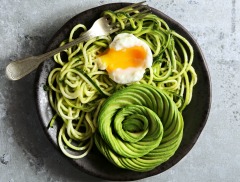Don't just meal plan... meal plan intelligently - with Meal Genius! Sign up for our free newsletter to get delicious recipes, sample meal plans and a whole lot more!
Duck, Fat
Gaining popularity for its flavor profile, duck fat is a often used in high end restaurants for sauteeing and frying.
Duck fat is nearly 51% monounsaturated fat, with 36% saturated fat and 14% polyunsaturated fat.
Because of its high ratio of monounsaturated and saturated fats, duck fat remains stable during cooking. Not only does this preserve the delicious flavor of the fat, it also reduces the risk of creating lipid oxidation products (LOPs). These harmful compounds can form when certain fats are exposed to high heat. They have been associated with cellular damage and heart disease.
The Benefits
- Special diets: Autoimmune Paleo Diet, Candida Diet, Diabetic, Elimination Diet, Gluten-Free Diet, Gluten-Free/Dairy-Free Diet, Grain-Free Diet, Low Acid Diet, Low Carb Diet, Low FODMAP Diet, Low Histamine Diet, Low Oxalate Diet, Low Starch Diet, Paleo Diet (Light), Paleo Diet (Strict), PCOS Diet, Primal Diet, Thyroid Diet, Whole Food
- Excellent Source of:
- Good Source of:
- Preferences: No Coconut, No Pseudograins, No Fish, No Red Meat, No Pork, No Eggs, No Shellfish, No Gluten, No Nuts, No Seeds, No Soy, No Dairy, No Corn, No Yeast, No Peanuts, No Grains, No Molds, No Legumes, No Nightshade, No Citrus, Low Carbohydrate, Low Cholesterol, Low Sodium, Low Sugars
Related Foods
Selecting and Storing
Store duck fat in the refrigerator.









